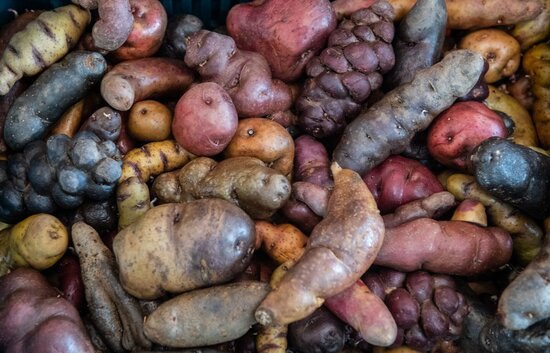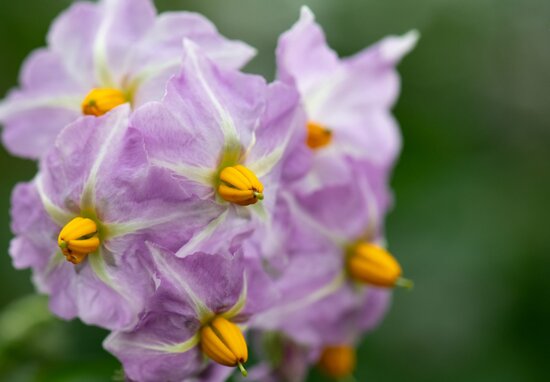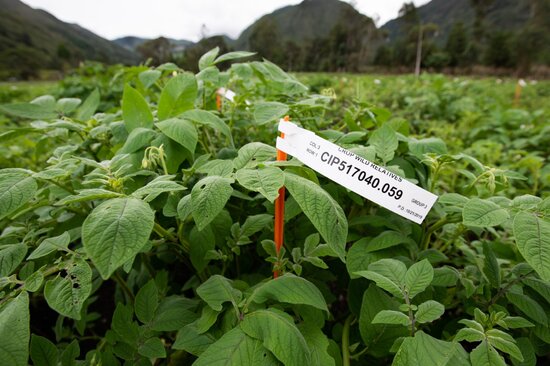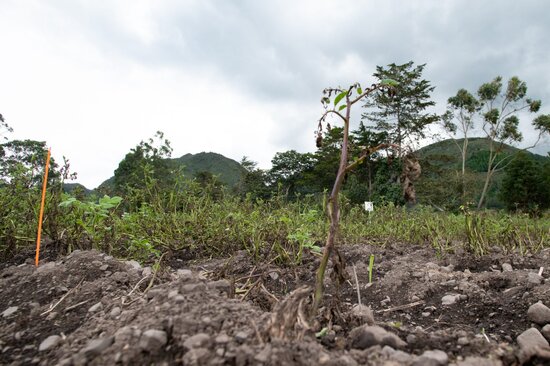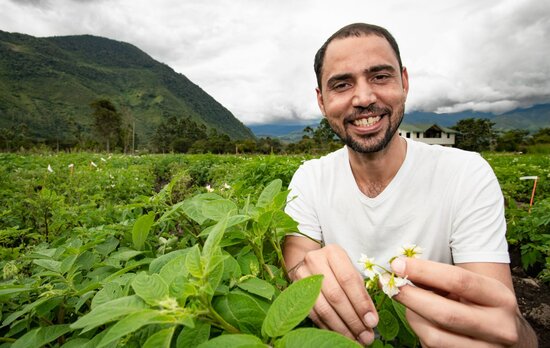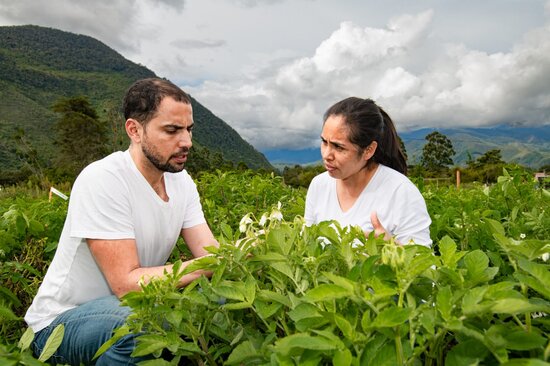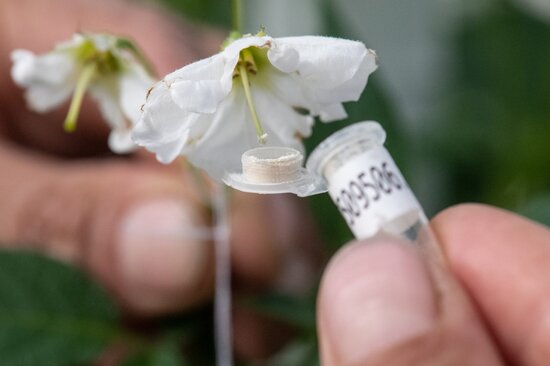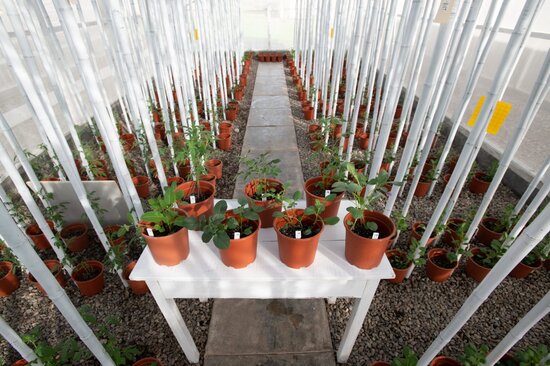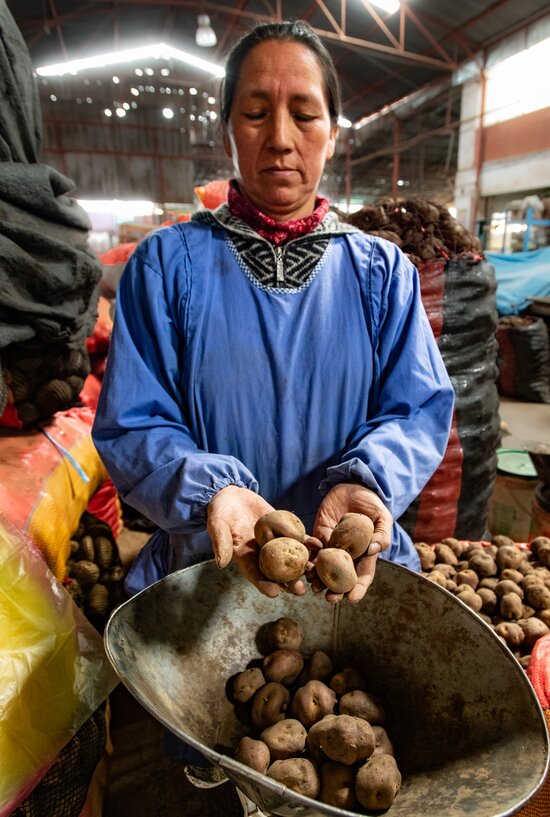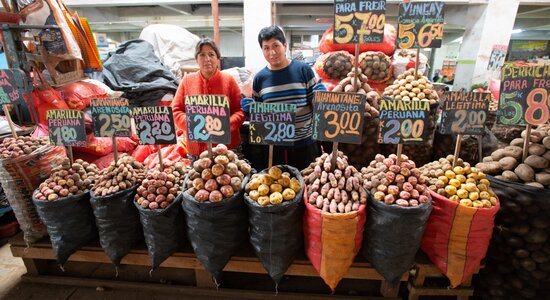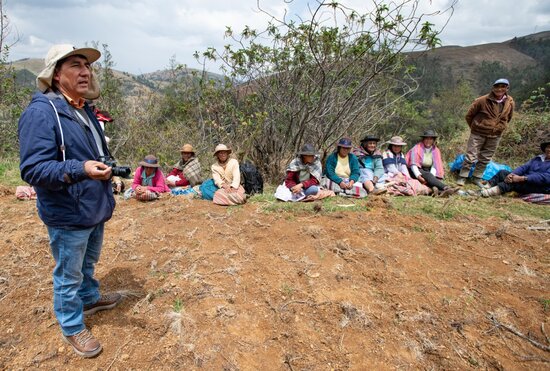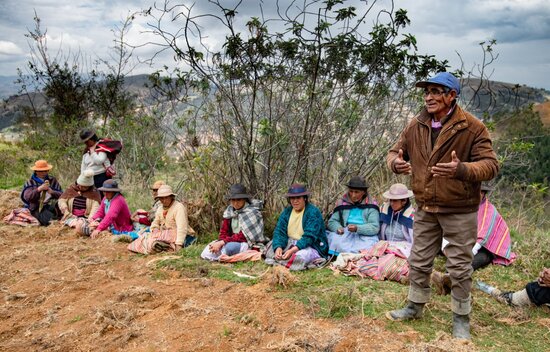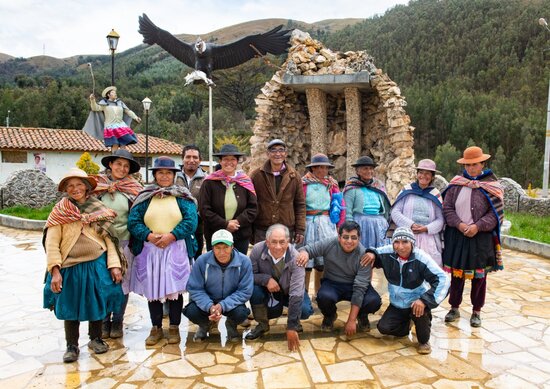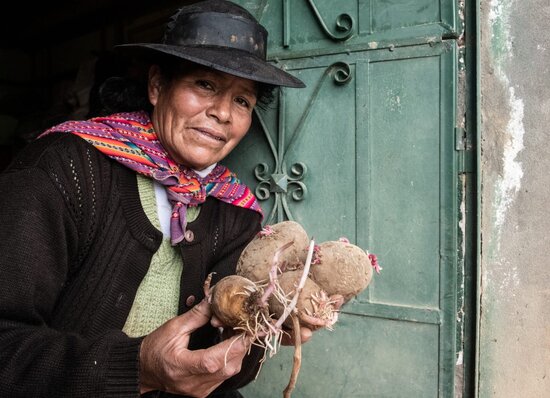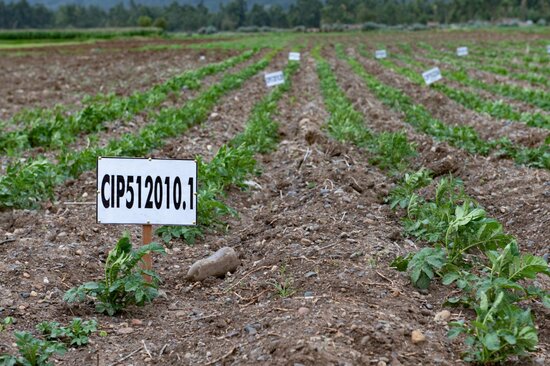Potato
The BOLD Potato Project
The BOLD potato project aims to increase the potato diversity available to potato breeding programs and farmers by integrating lines derived from crop wild relatives (CWR) into breeding pipelines and developing new elite varieties with introgressions from CWR.
Why potato?
The potato is the third most important food crop in the world after rice and wheat in terms of human consumption. A single medium-sized potato contains about half the daily adult requirement of vitamin C. Other staples such as rice and wheat have none. The potato is very low in fat, with just 5% of the fat content of wheat, and one-fourth the calories of bread. Boiled, it has more protein than maize, and nearly twice the calcium. But it is not just a food crop, being used in the pharmaceutical, textile, wood and paper industries as an adhesive, binder, texture agent and filler and potato starch is a 100% biodegradable alternative to plastics used in manufacturing disposable plates and cutlery.
The crop is grown in more than 100 countries around the world, and are a staple food for more than 1 billion people. According to FAOStat, the five largest producers in 2021 were China, India, Ukraine, the United States of America and the Russian Federation.
The plants can be grown at any altitude and with little water, and a hectare of potato can yield two to four times the food quantity of a grain, making it an ideal mountain crop.
Challenges
Potato faces a number of challenges, including the effects of climate change and a range of pests and diseases, particularly late blight and bacterial wilt. Previous work has identified sources of heat and drought tolerance and disease resistance in CWR. However, these are often weedy plants producing small, bitter tubers. Pre-breeding is needed to transfer these traits into the cultivated potato. A further challenge is that the crop is largely produced clonally rather than from true seed, which presents challenges for producing sufficient disease-free planting materials to promote large-scale uptake of new varieties.
Building on the Crop Wild Relatives Project
The Crop Wild Relatives Project made considerable strides in pre-breeding potatoes using CWR, culminating in the release of CIP-Matilda, a new potato variety derived from CWR that is almost completely resistant to late blight — a disease that caused an estimated global loss of $6.7 billion in yield losses and control costs and that is spreading into higher altitudes in the Andes. Pre-bred lines developed from crosses with wild relatives have also shown good resistance to late blight and bacterial wilt and tolerance of heat, drought and salinity.
The project also saw the development of testing of a new breeding approach — diploid hybridization — that facilitates pre-breeding between potato wild relatives and cultivated varieties.
Project partners
- International Potato Center, Kenya office (lead)
- Instituto Nacional de Investigaciones Agropecuarias, Ecuador
- Yanapai Group, Lima, Peru
Activities
- Develop and evaluate CWR-derived bacterial-wilt-resistant and heat tolerant pre-bred clones with input from farmers
- Develop and evaluate CWR-derived late-blight-resistant pre-bred clones with input from farmers
- Develop and implement a variety dissemination strategy for CIP-Matilde variety
- Characterize, validate and introduce novel diversity for drought tolerance, late-blight, bacterial-wilt and virus resistance in self-compatible diploid breeding materials
Potato resources
Crop Trust stories
- Meet CIP-Matilde: The potato knocking the spots off late blight in Peru, CIP Annual Report 2022
- Global Guardians of Potato Diversity, 9 August 2023
- Harnessing the power of wild potatoes to feed a climate-challenged world while reducing agrochemical use, 21 December 2022
- The Future of Food is Wild: The Story Behind The CIP-Matilde Potato Variety, 14 October 2021
- Potatoes for a Changing Climate. 23 March 2020
- Potato Global Crop Conservation Strategy,
Relevant publications
- Jansky, S.H., Dempewolf, H., Camadro, E.L., Simon, R., Zimnoch-Guzowska, E., Bisognin, D.A., Bonierbale, M. 2013. A case for crop wild relative preservation and use in potato. Crop Science 53(3): 746−754.
- Castañeda−Álvarez, N.P., de Haan, S., Juárez, H., Khoury, C.K., Achicanoy, H.A., Sosa, C.C., Bernau, V., Salas, A., Heider, B., Simon, R., Maxted, N., Spooner, D.M. 2015. Ex situ conservation priorities for the wild relatives of potato (Solanum L. Section Petota). PLoS One 10(4): e0122599. https://doi.org/10.1371/journal.pone.0122599.
- Ordonez, B., Orillo, M., Bonierbale, M. 2016. Manual biologia reproductiva y citologica de la papa. Lima, Peru: Centro Internacional de la Papa.
- Filho, C.C.F., Andrade, M.H.L., de Souza Marçal, T., Fernandes, M.O., Bastos, A.J.R., Guedes, M.L., de Paula Ribeiro, S.R.R., Pinto, C.A.B.P., Nunes, J.A.R. 2021. Selection of potato clones for heat tolerance and resistance to potato viruses X and Y for processing purposes. Crop Science 61(1): 552–565.
- Medeiros, M.B., Valls, J.F.M., Abreu, A.G., Heiden, G., Ribeiro-Silva, S., José, S.C.B.R., Santos, I.R.I., Passos, A.M.A., Burle, M.L. 2021. Status of the ex situ and in situ conservation of Brazilian crop wild relatives of rice, potato, sweet potato, and finger millet: Filling the gaps of germplasm collections. Agronomy 11: 638. https://doi.org/10.3390/agronomy11040638.


